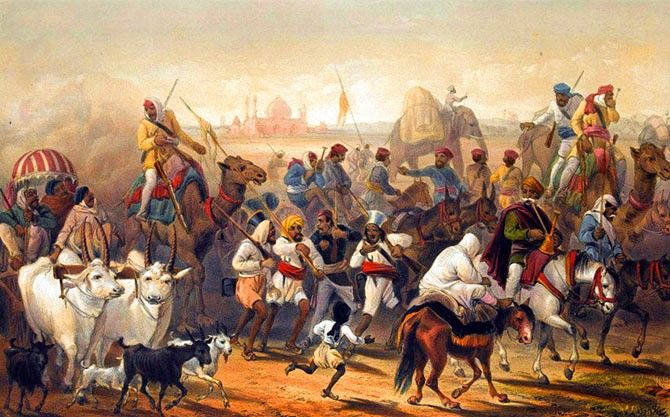For smooth Ad free experience
For smooth Ad free experience
Within a single night, a horrific realisation had dawned on the British. The sepoys enrolled in their service were also capable of overthrowing them. This was the Vellore mutiny, the first big act of open defiance in the army- albeit short-lived- had a lasting legacy.

Happened on 10th July 1806
Rebel soldiers angered by the British intervention in the matter of their faith planned an uprising. They defied orders, killed their superiors and took charge of the garrison. As a final declaration of their freedom, they raised the banners of the rightful rulers. This isn’t the story of 1857.
While the mutiny of 1857 is termed India’s first war of independence, it was certainly not the first attempt to resist the British. Various tribals, peasants and soldiers bravely resisted the English since they set foot in this country. The first large scale sepoy mutiny took place on 10 July 1806 in Vellore.
Tempers were flared and the reason? As per the new rules, Hindu sepoys were forbidden to wear religious marks on their foreheads and Muslim sepoys were supposed to trim their facial hair. As if this was not enough, they were now required to wear a European style hat that resembled recent Christian converts, as a part of their uniform.
Whoever dared to challenge these rules was dismissed. Enough grievances were already stacked up against the British regime. This attack on religious identity proved to be the final nail in the coffin, fueling the fire and the soldiers decided that they had had enough.
9th July marked the wedding of Tipu Sultan’s daughter. A couple of guests, the plotters of the mutiny, had the opportunity to collect at the fort and plan their next step. The timing was perfect as unlike usual days the soldiers were supposed to march at dawn and all of them were there at the same place.
The stars were aligned and courage hung in the air. Without any delay, three battalions of the Madras infantry rose in revolt. Two hours after midnight they got into action and killed their commanding officers. The 69th Regiment of Foot which was staying at the fort also became their target. By dawn, the entire fort complex was under their control and retainers of Tipu’s son had also joined them.
Everything was going as planned but Major Coopes, a British officer, managed to escape. As soon as he altered the Garrison at Arcot, the company sprang into action. Sir Robert Rollo Gillespie immediately left for Vellore with his troops.
The relief operation began and their first move was to locate surviving Europeans. Once this was done, it was now time to confront the rebel sepoys. However, a huge problem remained in their way; the fort’s gate was heavily guarded and it was impossible to get through it. Robert was not willing to give up yet and he came up with a plan to get into the fort by climbing its walls.
In a furious first attack, the British summary executed 100 soldiers. Within a single slash, hundreds were killed and the mutiny was put down.
All the battalions of the Madras infantry that rose in the revolt were disbanded and the fort was restored to the British. Yet this doesn’t mean that all of this went in vain. It won’t be wrong to say that for the time, the English were scared of the native soldiers going out of their control. They tried to control the damage by recalling the outrageous new laws and the officers who had come up with this.
Yet, it turns out that they learnt nothing from this, the same mistake was repeated again and the Enfield Rifles became the immediate cause of the Revolt of 1857.
A single day of mutiny was enough to tell the Indians what all were they capable of. It was their collective strength that got them this short-lived victory and it would eventually lead to a lasting legacy.
0
You might be interested in reading more from
